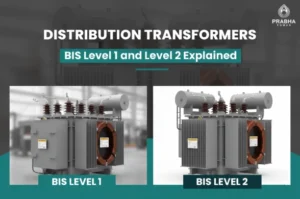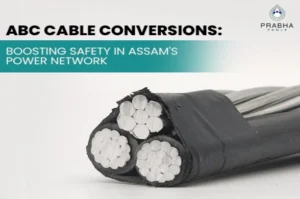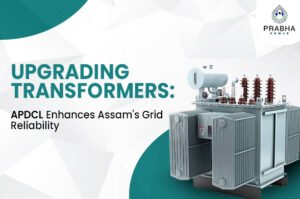
If you have ever experienced a power outage in the middle of preparing dinner or lost the internet connection just before your online meeting, then you understand how our daily lives are profoundly impacted by electricity.
And if you happen to reside in Assam, you will be happy to find out that something big is going on behind the scenes: a mega upgrade of the Assam 33/11 kV substations is quietly but strategically increasing the state’s district-level power capacity.
This isn’t another government scheme. It is a well-thought-out and measured program to solve the real issues affecting consumers: falling voltages in the system, frequent interruptions of electric service, and overloaded transformers. From small towns to growing urban centres, new substations are making life easier, businesses more reliable, and homes more connected.
The increasing need for reliable electricity in Assam has drawn attention to significant upgrades – especially at the district level. At the heart of this revitalization are the Assam 33/11 kV substations, a large initiative to solidify the core of the power distribution system in the state.
As industries are on the rise, towns become cities, and rural electrification is happening, new substations in Assam are no longer a technical or equipment upgrade, but a significant necessity for powering homes, businesses, and communities. This article focuses on what the upgrades signify, why they matter, and what the future holds for power in Assam.
The Significance of 33/11 kV Substations has Never Been Greater
A 33/11 kV substation may seem like an array of wires and numbers, but the reality is that this is where the high voltage electricity from the transmission grid is switched for your home, office, school or farm to use. Without a reliable network of these substations, even the best generation of power goes to waste!
For this reason, the 33 kV substation projects in Assam are not just focused on the technical upgrade, but what becomes the life-support system for day-to-day life and economic mobility.
Just think of the recent focus on 33/11 kV substations in Assam and why it’s now vital to have this attention:
– Provide stable power to all customers – especially in districts with record voltage variances and fluctuations
– Reduce outages and disruptions to service from load balancing and better fault management
– Stimulate local industrial growth – ensuring that a stable and reliable supply is not interrupted by poor supply
– Improve capacity to electrify remote and rural customers, and further develop energy corridors
In other, more poignant terms, when these substations are optimally operating, your ceiling fan doesn’t flicker just because you turned on a light to watch TV, your shop can stay open later because you are not on a daily rolling blackout, and your village school can run digital classrooms to teach students 21st-century skills.
The Present Status of Power Grid in Assam
With improved distribution capabilities, they allow for faster fault detection and therefore less downtime for the systems during outages. The voltage regulation they offer minimizes wear on household electronics and provides stability to industrial equipment. In regions where transformers would burn out due to overload, at least now those areas can better distribute the load across all substations, and ultimately add to the life of those devices and the overall infrastructure.
Assam has been making whispering changes to modernise its power systems. The catalyst for this transformation are the new Assam 33/11kV substations. For many years, inconsistent voltage capacity, unplanned power outages, and antiquated infrastructure made reliable electricity a luxury in many regions.
In the past decade, Assam has experienced tremendous growth in electrification; however, obstacles remain in tier-2 and rural communities. While Guwahati and a few other metropolitan areas are relatively stable when it comes to electricity supply, many districts experience:
– Overloaded feeders
– Repeated failure of transformers
– Bulk supply voltage instability
– Power dissipation while transmitting electricity
The state has made good strides in these efforts under programs like Saubhagya and DDUGJY, yet even the best intentions will not increase access if basic infrastructure, such as 33 kV substation projects in Assam, is not built.
Upgrades at the District Level: What’s Really Going On?
Look, substations probably won’t make the headlines like a large generating station, but they are invaluable. For example, a 33/11 kV substation serves as a transition point from high-voltage transmission lines to your local electricity supply. Essentially, it disconnects the levels of electricity that aren’t safe for everyday residential and business use and steps it down to safe and usable voltages.
Substations hold the supervisory role within your local power system. Not only do they ensure power gets to your home, but they also need to ensure it can be delivered continuously, safely, and without damaging appliances. The push for new substations in Assam comes at a critical time, when electricity demand is at an all-time high due to rapid urbanisation, rural belt electrification, and digital expansion.
The projects highlighted above include:
- Darrang: Recently commissioned two new substations to relieve overloaded existing feeders
- Jorhat: Upgraded existing substations by installing state-of-the-art equipment, new control panels, and modern protection schemes
- Tinsukia: New 33/11 kV substation to facilitate the industrial growth in the region
- Lakhimpur & Dhemaji: Plans to facilitate rural electrification needs through micro grid solutions
These upgrades are not only significant infrastructure milestones, but they also enhance the quality of life for thousands of people across the region.
How These Substations Strengthen District-Level Power Capability in Assam
The advantages of these substations go well beyond just “keeping the lights on.” The additional distribution can increase the speed of fault detection and reduce outage times. The voltage stability that these substations provide results in less wear on household electronics and allows industrial machinery to perform better. In districts with transformers burning out from too much load, these substations equalize the load, making all equipment and assets last longer.
Building a new substation or upgrading an existing one isn’t simply a new transformer or two. It is a complex process that requires extensive pre-design work, planning, coordination, and then integration into existing systems. Here are some of the examples of how these upgrades help increase district-level capacity in Assam:
Increased capacity:
New substations relieve the pressure on existing, overloaded networks and relay the power to different parts of the district much more efficiently.
Declining condition of substations:
Modern substations incorporate:
– new control panels
– automatic load management
– SCADA integration for remote monitoring
These capabilities allow operators to respond more quickly to faults or changes in the load.
Less Energy Loss :
Older, unbalanced systems will typically lose electricity before the supply reaches your home. Transmission losses are lower with a new substation.
Localised Delivery of Power :
The power quality to end users improves having the substations are closer to the end user. There are fewer flickers, reduced surges and greater consistency in voltage.
Obstacles That Require Further Consideration
The odyssey from plan to operational facility is insecurely troubled by waiting for land acquisition, waiting due to heavy monsoonal conditions, and in a few of the more secluded regions, logistical restraints of transporting large equipment.
As well, recruitment and training of capable labour to operate and maintain these substations in rural districts will continue to require and sustain a working effort and funding for manpower. However, with an attractive road map and commitment from both local governmental agencies, local governmental authorities, and with technical assistance, tangible and on-the-ground countermeasures to these obstacles are already occurring. All that said, although this seems to be going well, we still have obstacles in practice that limit our speed, most definitely
- Delays in land acquisition for new substation sites
- Insufficient funding on the district administration side
- Lack of manpower to operate and maintain substations in remote areas
- Coordination among multiple stakeholders/organizations/agencies is a challenge
Addressing the problems will require policy change and collaboration at the local level.
What Makes Prabha Power Distinct in These Projects?
Prabha Power’s engagement in these district-level improvements will rely on local experience and engineering proficiency. From the site selection and design phases through to construction, safety testing, and ongoing maintenance after the project is operational, our teams closely coordinate with APDCL and district-level government bodies, working together to deliver projects efficiently on time without sacrificing quality.
What differentiates us is not only our speed and efficiency, it is our comprehension of the distinct hydrology, terrain, climate, and logistical challenges of Assam, which enables us to design and provide more intelligent, durable, long-lasting solutions.
In addition and most importantly, we are committed to ensuring every project actually makes a difference to the available district power capacity in Assam and will lead to future scalability.
Our Method includes
– Customized site engineering
– Prompt and effective delivery
– Quality testing and safety compliance
– Training engineers on-site
– Support after the handover.
We think of power as more than electricity. It’s about empowering people, industries, and futures.
Future Plans: Beyond Expansion
Looking forward, the role of these substations will only expand. Over the next five, ten, and 20 years, in addition to the demand for electricity, when the grid will need to not just be strong, but smart, it will include the increase of electric vehicles, household consumption of electronics, and electrification of more rural and remote areas of the state.
These future plans include integrating sources for renewable energy, like solar, into these substations, AI-powered load management systems, and rechargeable batteries.
These steps will help build a more resilient, flexible grid that can adapt to the demands of a fast-changing world. And at the heart of it all? A well-planned, modernised substation network.
And then what?
– Incorporation of new renewable energy sources into substations
– Development of smart metering systems with grid feedback
– Applying AI-based analytics for real-time load balancing
– Improving maintenance and response times with predictive tools
Assam is on the verge of an energy revolution, and substations are the silent champs catching all the credit.
Brief Overview: The Importance of the 33/11 kV Substations
With society leaning towards a constant dependence on uninterrupted power, these behind-the-scenes upgrades are extremely valuable. Reliable electricity was once viewed as a luxury, but has transitioned into an essential need that touches on everything related to health, education, business, and communication.
Today, new substations may not make the news, but they are powering the advances that people observe in their daily lives.
– Enhance local voltage conditions
– Limit power outages in rural and semi-urban areas
– Promote industrial and agricultural opportunities
– Prepare for eventual smart grid connections
– Add to the network of energy necessary for emerging energy demands
Conclusion
The ongoing development of Assam’s state-of-the-art 33/11 kV substation represents far more than a simple infrastructure upgrade; it stands as the cornerstone of Assam’s promising future. These transformative improvements at the district level are illuminating homes, energizing industries, and sparking rural development like never before. At the heart of this progress is your trusted partner, Prabha Power, dedicated to driving this advancement with expertise and commitment.
As one of the leading suppliers of electrical infrastructure and construction materials in Assam and the Northeast, Prabha Power is honoured to support this journey every step of the way. If you would like to learn more or have a project where we can assist, please reach out to us at 093948 79486. Together, let’s build the vision that powers Assam’s future.






